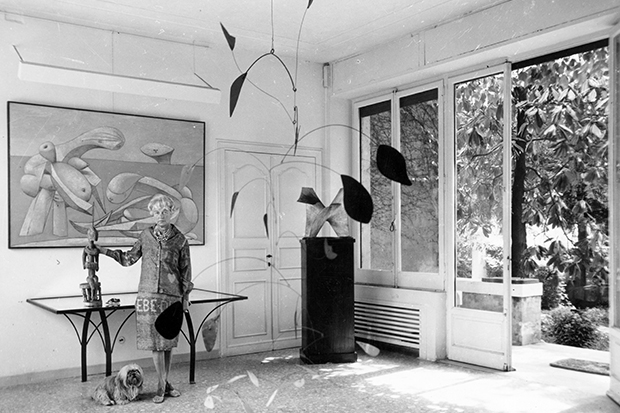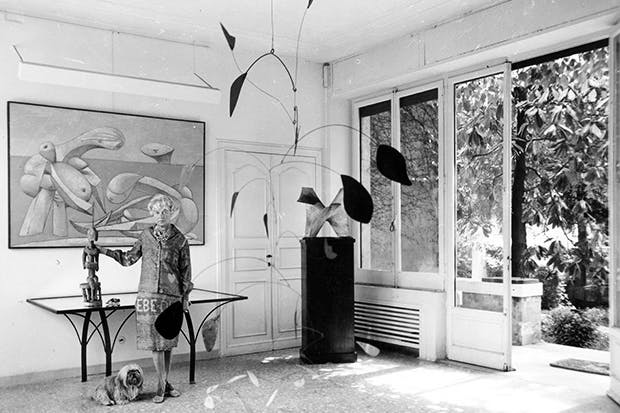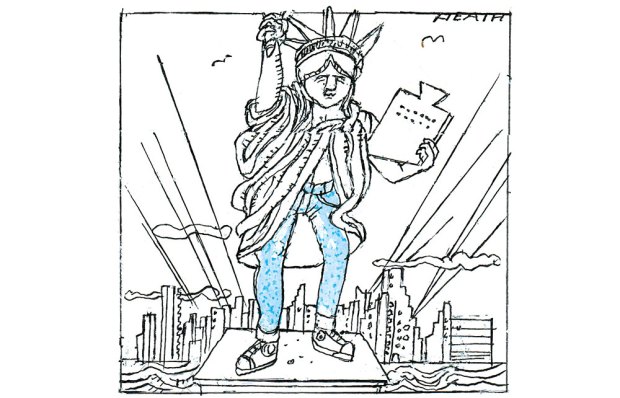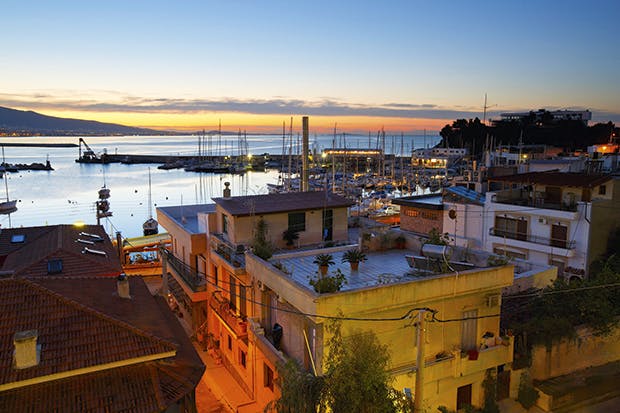She had come a very long way from the shtetl, but Marguerite ‘Peggy’ Guggenheim was still the poor relation of her fabulously wealthy family. Although these things are, of course, relative. It was her uncle Solomon, enriched by mining, who first made the family’s name. Peggy’s father sank with the Titanic in 1912. Eventually Solomon’s museum, a Frank Lloyd Wright design as magnificent as it was absurd, became a New York landmark. Peggy never much cared for it, so she built her own elsewhere.
Guggenheim was no one’s idea of a great beauty, but possessed enough lust, fortune and ambition to compensate. She moved to France just as traffic on the New York–Paris axis was becoming the standard model of the history of modern art. Here she met Man Ray, Brancusi and Marcel Duchamp. In this threesome were several of the germs of modernism: a clever photo-impresario, an idiot–savant primitive and a genius-charlatan. She also met Samuel Beckett, with whom she soon spent a day and a night in bed, examining intellectual postures and drinking champagne.
Next, she conquered London, or at least Cork Street, opening a gallery here in 1938. It failed financially, so she pondered a museum in Paris, but Hitler intervened and she returned to New York, where the ‘Art of This Century’ gallery opened in 1941. It was in that year that she married the versatile surrealist Max Ernst. By the end of the decade, she was incubating Jackson Pollock, whom she found working as a carpenter on her uncle’s museum site.
Guggenheim was a collector of genius. At one point she made it her business to buy a proper painting every day, and she acquired a personal collection to humble most national museums. Indeed, the reason the Tate has such a feeble collection of mainstream modernism is that its negotiations to acquire Guggenheim’s collection failed.
Her collecting of men was at least as industrious as her collecting of art. Once, wearing an Yves Tanguy earring in one ear and an Alexander Calder in the other (to demonstrate a nice equivocation between surrealism and abstraction), she was asked how many husbands had she had. The answer came: ‘You mean my own, or other women’s?’ Gore Vidal described her as a Henry James heroine with balls.
During her collecting campaigns Guggenheim bedded, by her own estimate, over a thousand men and acquired more than 40 museum-quality Picassos: her voracity in matters of culture and sex made Alma Mahler look like a timid provincial. But fame was always the spur: in her autobiography, art is not discussed until near the halfway point.
Her collection was eventually installed in her Grand Canal-side home, the Palazzo Venier dei Leoni, near the Accademia. It opened to the public in 1951 and has become one of Venice’s most popular attractions. Modern art never had a better witness, nor mistress, than Peggy Guggenheim.
The post Peggy Guggenheim appeared first on The Spectator.
Got something to add? Join the discussion and comment below.
Get 10 issues for just $10
Subscribe to The Spectator Australia today for the next 10 magazine issues, plus full online access, for just $10.
You might disagree with half of it, but you’ll enjoy reading all of it. Try your first month for free, then just $2 a week for the remainder of your first year.














Comments
Don't miss out
Join the conversation with other Spectator Australia readers. Subscribe to leave a comment.
SUBSCRIBEAlready a subscriber? Log in